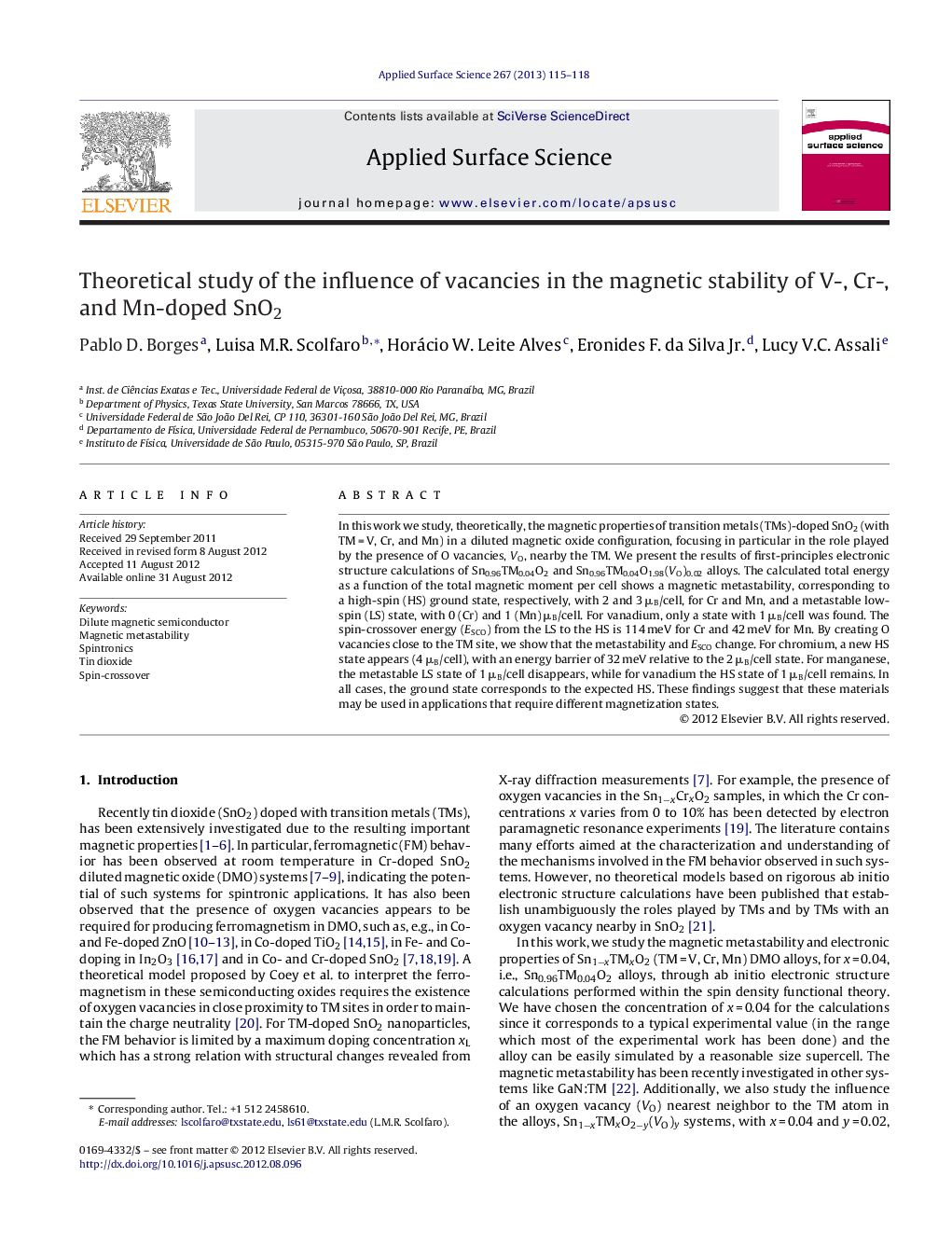| Article ID | Journal | Published Year | Pages | File Type |
|---|---|---|---|---|
| 5363476 | Applied Surface Science | 2013 | 4 Pages |
In this work we study, theoretically, the magnetic properties of transition metals (TMs)-doped SnO2 (with TM = V, Cr, and Mn) in a diluted magnetic oxide configuration, focusing in particular in the role played by the presence of O vacancies, VO, nearby the TM. We present the results of first-principles electronic structure calculations of Sn0.96TM0.04O2 and Sn0.96TM0.04O1.98(VO)0.02 alloys. The calculated total energy as a function of the total magnetic moment per cell shows a magnetic metastability, corresponding to a high-spin (HS) ground state, respectively, with 2 and 3 μB/cell, for Cr and Mn, and a metastable low-spin (LS) state, with 0 (Cr) and 1 (Mn) μB/cell. For vanadium, only a state with 1 μB/cell was found. The spin-crossover energy (ESCO) from the LS to the HS is 114 meV for Cr and 42 meV for Mn. By creating O vacancies close to the TM site, we show that the metastability and ESCO change. For chromium, a new HS state appears (4 μB/cell), with an energy barrier of 32 meV relative to the 2 μB/cell state. For manganese, the metastable LS state of 1 μB/cell disappears, while for vanadium the HS state of 1 μB/cell remains. In all cases, the ground state corresponds to the expected HS. These findings suggest that these materials may be used in applications that require different magnetization states.
⺠Oxygen vacancies play an important change in magnetic stability of V-, Cr-, and Mn-doped SnO2. ⺠High spin (HS) ground state and low spin (LS) were observed for these systems. ⺠The spin crossover energies from the LS to the HS where calculated. ⺠Our findings suggest that these materials may be used in applications that require different magnetization states.
